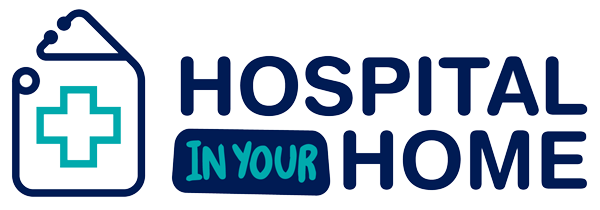Home Hospitalization for Chronic Conditions A Long-term Perspective

Home hospitalization for chronic conditions is rapidly transforming healthcare delivery, offering patients with long-term ailments the comfort of receiving care at home without sacrificing quality.
As the global population ages and the number of people living with chronic diseases continues to rise, innovative models like home hospitalization are gaining attention for their potential to reshape how we approach healthcare.
With expert insights, this article will dive deep into this model’s advantages and challenges.
What Is Home Hospitalization?
Home hospitalization is an innovative healthcare model that allows patients to receive high-quality medical care within their homes rather than in a hospital setting.
This care includes a wide range of services—from routine monitoring to more intensive treatments such as intravenous therapy, wound care, and even dialysis—all provided by a team of healthcare professionals.
The appeal of home hospitalization lies in its ability to bridge the gap between traditional hospital care and home-based recuperation.
Patients who suffer from chronic conditions, such as heart disease, diabetes, and chronic obstructive pulmonary disease (COPD), often need consistent, long-term care.
Instead of visiting the hospital repeatedly, home hospitalization provides these services in a personalized and comfortable environment.
While this model may sound new, it has roots dating back to the early 20th century when doctors regularly visited patients’ homes
In today’s high-tech world, however, the practice has evolved to include cutting-edge telemedicine, remote monitoring, and artificial intelligence tools that allow for continuous care and real-time intervention, all from the patient’s living room.
Chronic Conditions That Benefit from Home Hospitalization
Certain chronic conditions make home hospitalization for chronic conditions especially beneficial.
Diseases that require consistent management and monitoring often see the most success in this model.
Let’s explore some of the conditions where home-based care has proven particularly effective:
1. Chronic Obstructive Pulmonary Disease (COPD)
COPD is a progressive lung disease that requires ongoing management, particularly during flare-ups, which can result in frequent hospitalizations.
Home hospitalization allows patients to receive respiratory treatments, oxygen therapy, and round-the-clock monitoring from trained healthcare professionals without needing to be admitted to a hospital.
2. Diabetes
Managing diabetes requires regular blood sugar monitoring, medication administration, and sometimes even insulin injections.
For patients with unstable blood sugar levels, home hospitalization can ensure that these crucial services are provided with expert oversight, preventing potential complications such as diabetic ketoacidosis or hypoglycemia.
3. Heart Disease
Heart disease patients often need continuous monitoring, particularly those recovering from surgeries or suffering from heart failure.
Remote monitoring tools allow physicians to track heart rates and rhythms in real-time, adjusting medications or treatment plans to prevent further deterioration.
4. Kidney Disease
For patients with advanced kidney disease, home dialysis is becoming an increasingly viable option.
Home hospitalization provides access to professional care and necessary equipment, significantly improving patient outcomes while reducing the burden of frequent hospital visits.
5. Cancer Care
Cancer patients undergoing chemotherapy or radiation often struggle with the side effects of treatment.
With home hospitalization, chemotherapy can be administered at home, and patients can be closely monitored for any adverse reactions.
This model allows for managing pain, fatigue, and other symptoms in a familiar setting, significantly improving the patient experience.
These chronic conditions benefit most from consistent, professional care, and home hospitalization offers a tailored, patient-centered approach that traditional hospital settings may lack.
Long-Term Advantages of Home Hospitalization for Chronic Care
The long-term benefits of home hospitalization for chronic conditions are clear. It’s not just about reducing the strain on hospital resources but fundamentally changing how patients experience healthcare.
Here are some of the most significant advantages:
1. Improved Patient Outcomes
Studies show that patients receiving care at home have fewer hospital readmissions and better overall health outcomes than those who remain in traditional healthcare settings.
One key reason for this improvement is that home hospitalization allows for continuous monitoring, so any negative trends or signs of deterioration are identified quickly and addressed proactively.
Additionally, patients are more likely to adhere to their treatment plans when receiving care in the comfort of their own homes.
They’re also less exposed to hospital-acquired infections, a significant concern for immunocompromised individuals with chronic conditions.
2. Cost Savings
Healthcare costs are skyrocketing, particularly for chronic diseases that require long-term management.
The hospital-at-home model significantly reduces costs by reducing inpatient stays, expensive hospital-based treatments, and unnecessary tests.
Studies have shown that home hospitalization programs can reduce costs by as much as 30-40% compared to traditional hospital stays, making it an attractive option for healthcare systems and patients.
3. Enhanced Patient Comfort
For most patients, the comfort of a home far outweighs a hospital’s sterile, unfamiliar environment.
Home hospitalization enables patients to remain in familiar surroundings, often with loved ones nearby, improving mental and emotional well-being during recovery.
The psychological benefits of this familiarity can also speed up recovery times and improve treatment adherence.
4. Personalized Care
One of the most significant advantages of home hospitalization is that it allows for a higher degree of personalized care.
Every patient is unique, and chronic conditions require tailored treatment plans.
Home healthcare teams can work closely with patients to ensure their specific needs are met, providing individualized attention often difficult to achieve in a busy hospital.
Technological Support: The Backbone of Home Hospitalization
Technology is at the core of home hospitalization for chronic conditions, enabling high-quality care without needing a hospital stay.
These technological advances make it possible for healthcare professionals to monitor patients remotely and respond to any changes in real-time.
1. Remote Monitoring Devices
Remote monitoring devices are crucial for patients with chronic conditions. These devices track vital signs like heart rate, blood pressure, oxygen, and glucose levels.
The data collected is automatically sent to healthcare providers, who can intervene if any alarming trends emerge. This constant connection allows for timely and effective adjustments to treatment plans.
2. Telemedicine Platforms
Telemedicine has become an essential tool in modern healthcare, allowing patients to consult with doctors via video calls, access electronic health records, and manage their treatments from home.
It’s particularly useful for patients in rural or remote areas who may not have easy access to specialist care.
3. Artificial Intelligence (AI)
AI and predictive analytics are also beginning to play a significant role in home hospitalization.
These technologies analyze data from remote monitoring devices and other sources to predict potential health issues before they occur.
AI can assist in identifying patterns and trends that may not be visible to the human eye, allowing for early intervention and more effective disease management.
Challenges and Considerations in Long-Term Home Hospitalization
While the benefits of home hospitalization for chronic conditions are clear, it’s essential to recognize the challenges and considerations that come with this model of care.
1. Healthcare Accessibility
Not all patients have equal access to home hospitalization services. In underserved communities, where healthcare resources are limited, the infrastructure for home-based care may not be available.
Furthermore, patients with limited financial resources or insurance coverage may struggle to afford the technology and equipment required for long-term home hospitalization.
2. Technological Barriers
While technology is the backbone of home hospitalization, it can also be a barrier. Not every patient is tech-savvy or has access to reliable internet, particularly in rural areas.
The success of this model depends heavily on the availability of telecommunication infrastructure, reliable power supply, and access to technical support.
3. Insurance and Reimbursement
Navigating the complexities of insurance and reimbursement for long-term home care can be challenging for patients and healthcare providers.
In some regions, home hospitalization programs may not be covered by insurance plans, limiting access to this innovative model of care.
Policy changes and advocacy are necessary to ensure that home hospitalization is a viable option for all patients with chronic conditions.
4. Caregiver Support
Family members or professional caregivers often play an essential role in home hospitalization, providing daily assistance with medical and non-medical tasks.
However, caregiving can be physically and emotionally demanding, leading to burnout.
Ensuring caregivers have access to proper training, respite care, and emotional support is crucial for the long-term success of home hospitalization programs.
Is Home Hospitalization Right for You? Key Factors to Consider
If you or a loved one suffers from a chronic condition, home hospitalization could offer a compelling alternative to traditional hospital care.
However, there are several factors to consider before choosing this model:
- Severity of Condition: Some conditions may still require occasional hospital visits or more intensive treatments that can’t be provided at home.
- Access to Technology: Reliable internet and access to remote monitoring devices are essential for success.
- Support System: Family or professional caregivers may be needed to provide daily assistance.
- Insurance Coverage: Check whether your insurance plan covers home hospitalization services.
Consult with your healthcare provider to discuss whether home hospitalization is a suitable option for managing your chronic condition.
The Promise of Home Hospitalization for Chronic Conditions
Home hospitalization for chronic conditions significantly shifts how we approach long-term healthcare.
With the proper technological support, access to professional care, and proper planning, this model offers an innovative solution that improves patient outcomes, reduces costs, and provides personalized care in the comfort of one’s home.
As technology advances and more patients seek alternatives to traditional hospital care, the future of home hospitalization looks brighter than ever.
With over 30 years of experience, Hospital in Your Home in Australia has set the benchmark for success in this field. Their expertise in providing exceptional home-based care is now being brought to the U.S. through Hospital in Your Home US.
If you’re ready to explore how the hospital-at-home model can work for you or your loved ones, contact Hospital in Your Home US today to see how we can help you succeed with personalized, home-based care.
FAQs
What is home hospitalization?
Home hospitalization is a healthcare model where patients receive treatment for chronic conditions in their own homes, rather than in a hospital setting. It involves regular visits from healthcare professionals, and the use of specialized equipment and technology to monitor patients’ health.
How does home hospitalization benefit patients with chronic conditions?
Home hospitalization can improve patients’ quality of life by reducing stress and anxiety associated with hospital stays. It can also help to prevent hospital-acquired infections and improve overall outcomes for patients with chronic conditions.
What types of chronic conditions are suitable for home hospitalization?
Many chronic conditions, including heart failure, chronic obstructive pulmonary disease (COPD), and diabetes, can be managed effectively through home hospitalization. The suitability of this approach depends on the patient’s individual needs and the availability of appropriate resources and support.
What are the challenges and limitations of home hospitalization?
One of the main challenges of home hospitalization is ensuring that patients have access to the necessary equipment, medications, and healthcare professionals. Additionally, there may be concerns about patient safety and the potential for complications to arise.
What is the future outlook for home hospitalization?
Home hospitalization is likely to become an increasingly important component of healthcare delivery as the population ages and the demand for chronic care services grows. Advances in technology and changes in healthcare reimbursement models are expected to drive the expansion of this approach.
